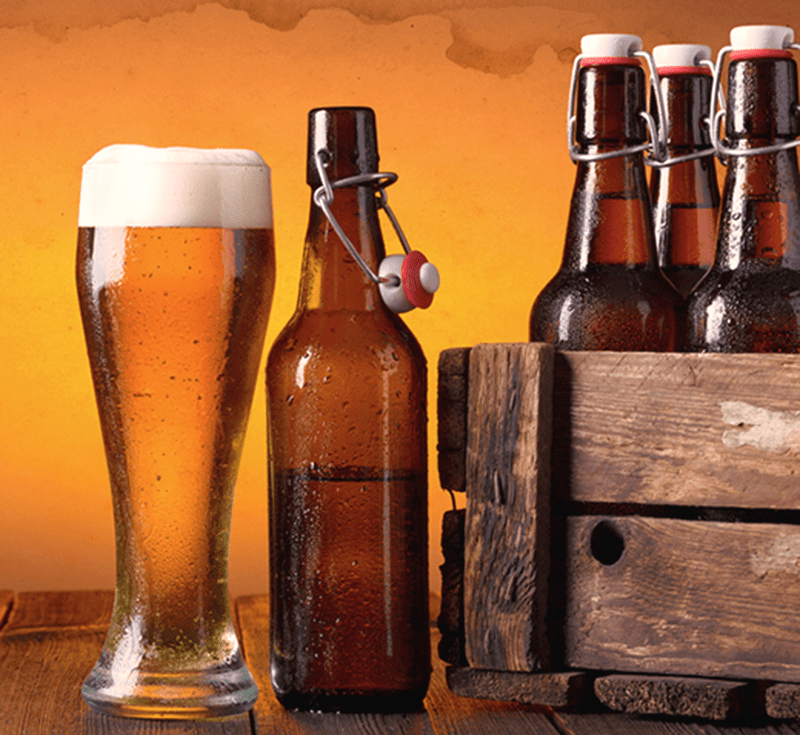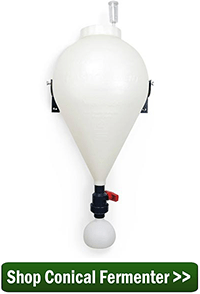 Patience. It’s one of a homebrewer’s many virtues, and a necessity for avoiding a green beer taste.
Patience. It’s one of a homebrewer’s many virtues, and a necessity for avoiding a green beer taste.
After bottling or kegging a batch of homebrew, it’s very difficult to resist sampling the beer before it’s ready. But your patience will be rewarded by giving the beer the time it needs to improve before you drink it. This waiting period – usually two or three weeks at a minimum – is referred to as conditioning or maturation. Beer that is too young is called green beer because of the way it tastes.
What is green beer? What is the green beer taste?
Green beer is beer that isn’t ready to drink yet. Though beer almost always gets better with time, tasting the beer early can be a good exercise to learn just how drastically time can change the beer. If you’ve ever tasted your original gravity wort sample, that’s pretty close to the green beer taste. The bitterness is very strong. The flavors just don’t blend together very well. What may be perceived as a fault or an infection may just be an indicator that the beer needs more time to condition. Aging will help to make the beer taste better!
What happens during conditioning?
Conditioning is really just a fancy word for aging. What we call green beer needs time before it’s ready to drink. Some conditioning takes place during secondary fermentation. Yeast consumes some byproducts of fermentation (like diacetyl), which removes some undesirable flavors from the homebrew, making the beer taste better. The yeast and other particles settle out of suspension, resulting in a clearer beer. Other flavors from the malt, hops, and yeast have time to meld together.
Conditioning also takes place in the bottle or keg. The beer carbonates and flavors continue to develop. If you’ve used priming sugar, the yeast will float around eating it up and producing carbon dioxide. This carbon dioxide not only create bubbles in the beer, it helps to drive off oxygen, which has the potential of making your beer go stale. The yeast will settle out in time.
At what temperature should I condition my homebrew?
Many beers go through a warm conditioning period and cold conditioning period. “Warm” or “cold” is relative to the beer style being made. Secondary fermentation, what might be considered a warm conditioning period, usually happens at or near the normal fermentation temperature for the homebrew. For lagers, a diacetyl rest (a couple days at about 55-60˚F) can be used to reduce buttery diacetyl flavors in the beer. After bottling, beer should be held at room temperature for about two to three weeks to allow the yeast the carbonate the beer.
The green beer taste is often improved by a cold conditioning period. During cold conditioning, flavor and clarity continues to get better. Cold conditioning can happen at temperatures as low as freezing, though I find that giving bottles several days in the refrigerator can make a big difference. Sometimes it’s easier said than done!
How long should beer be conditioned and aged?
That depends on the beer style. Most ales of moderate gravity only require a couple weeks of conditioning to remove the green beer taste. Hoppy beers are generally best consumed fresh. High gravity beers on the other hand tend to get better with some age. Barley wine, imperial stouts, doppelbocks, and other beers with high alcohol content may continue to improve over the course of a year or longer. Try saving a few bottles of each batch to sample three, six, or twelve months down the road to learn what time can do you your homebrew.
What’s the best environment for conditioning?
 The keys to reducing the green beer taste in your homebrew are a steady, moderate temperature during warm conditioning (so the yeast can carbonate the beer) and steady, cold temperature for cold conditioning. It’s also important that it’s dark during the conditioning phase, otherwise beer can become light-struck or skunked.
The keys to reducing the green beer taste in your homebrew are a steady, moderate temperature during warm conditioning (so the yeast can carbonate the beer) and steady, cold temperature for cold conditioning. It’s also important that it’s dark during the conditioning phase, otherwise beer can become light-struck or skunked.
Conclusion
Proper conditioning makes all the difference between delicious homebrew and one with an icky green beer taste. The next time you break into your batch early, remember, it will likely get better with age.
How do you condition your homebrew?
—–
David Ackley is a beer writer, brewer, and self-described “craft beer crusader.” He holds a General Certificate in Brewing from the Institute of Brewing and Distilling and is founder of the Local Beer Blog.

Most of my ales are conditioned for at least a few weeks at 40°F after they are carbonated. Seems to really improve the taste and clarity, although it’s hard to wait that long sometimes. All my lagers are kegged and just stored in the lagering freezer near 32°F. Always cold and ready to drink after they’re carbonated.
I remember the first time I made a home brew all those many years ago. It was a blonde ale recipe that that I got from a friend who brewed it all the time. Great stuff. After worrying the whole way through the brewing, bottling and conditioning, I couldn’t wait to taste it. My first mistake was trying one only a week into the carbonation period and being upset that it had little if any fizz. Then after letting it go for two weeks I tried another. Really nice carbonation, but it tasted like crap. I was totally bummed that it was so much different than my buddy’s. Almost dumped it figuring that I screwed up somewhere along the line. The two cases sat in my basement for about a month before I tasted another one. WOW!!!!!! Even better than my friend’s batch. Maybe not, but since it was mine it sure tasted better to me. What a difference a few extra weeks made. Lesson learned. We will drink no beer before its time. And in the immortal words of Charlie Papazian, “Relax. Don’t worry. And have a home brew.”
I also found my Ale’s condition much better if I leave them in the fridge @ 50F for 6 weeks!
Huge improvement, even the aroma comes out much stronger! And as mentioned above, the beer is much clearer.